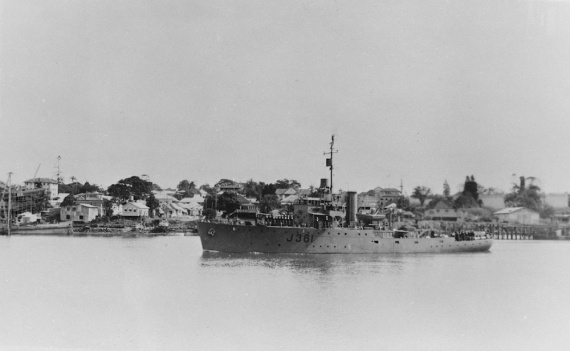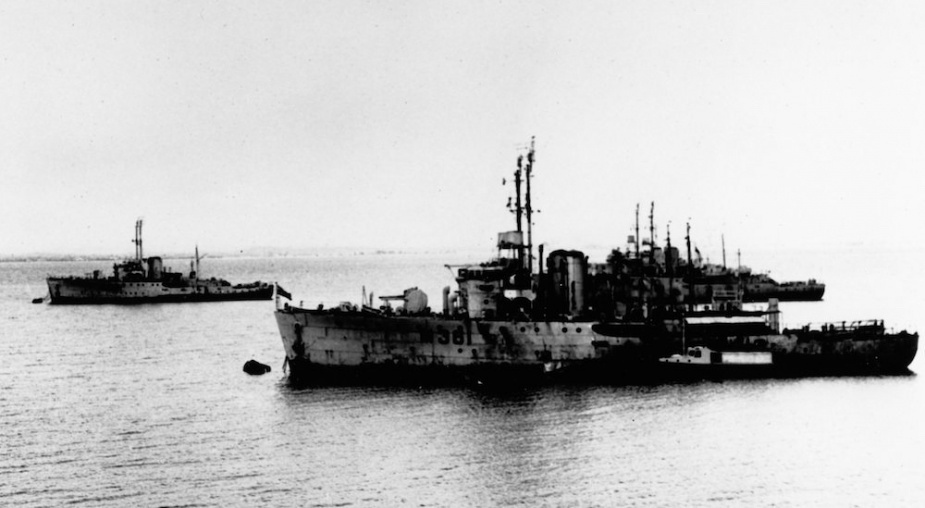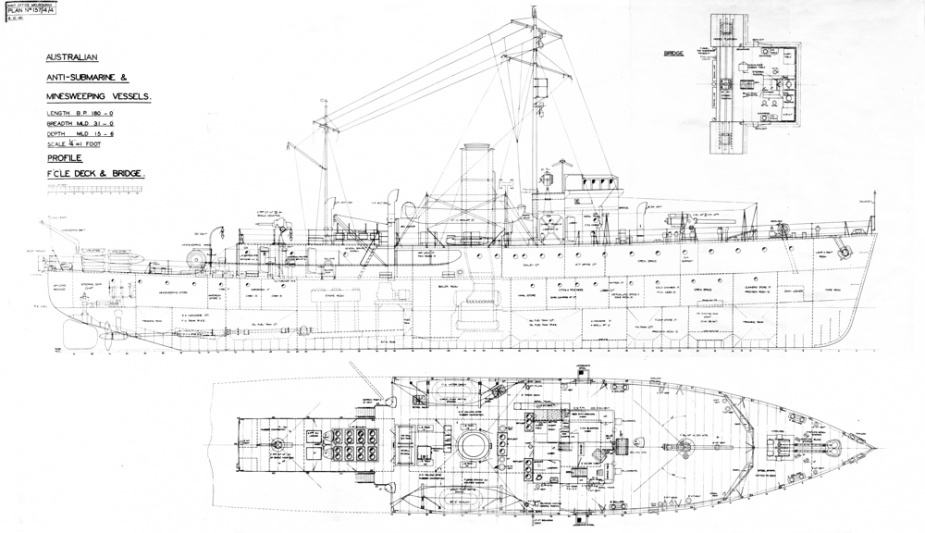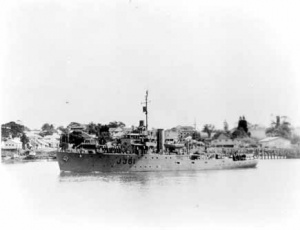Following trials in Moreton Bay, the ship sailed for Milne Bay on 3 June. After 3 weeks in New Guinea waters Parkes returned to Australia, arriving at Thursday Island on 27 June. Most of July was occupied in the escort of convoys between Thursday Island and Darwin. At the end of the month the ship proceeded to the Eilanden River in Netherlands New Guinea to embark 78 troops for Merauke. With these personnel safely disembarked at their destination Parkes sailed for Thursday Island to resume convoy escort duties on the Darwin run.
This work occupied the ship until September 1944. On 18 September it rescued survivors of the SS Kintore which had been wrecked on Warrimist Reef (near York Island) 4 days earlier. On 23 September it sailed for Fremantle.
October and early November proved an uneventful period occupied by routine patrols off Fremantle, before Parkes returned to Darwin on 7 November to take up escort and patrol duties in the Arafura Sea. Throughout the rest of November and December Parkes operated in the Darwin area. On 20 December it rescued 6 Dutch former prisoners of war who had succeeded in escaping from enemy held territory in an outrigger canoe.
From then until the end of hostilities on 15 August 1945 Parkes continued to be based on Darwin. It was principally occupied with local escort and anti-submarine duties. It was a period of mainly routine activity. However, early in August the ship assisted in the successful extraction by HMAS HDML 1324 of Services Reconnaissance Department personnel from enemy occupied Timor after a clandestine operation.
On 7 September 1945 the sloop HMAS Moresby (I), accompanied by 10 other Australian warships (including Parkes) and 2 Dutch vessels, sailed from Darwin to conduct the ceremony of surrender of all Japanese forces in Timor. Two other RAN vessels joined the convoy, which also included some small craft under tow, on 9 September. The ceremony was conducted at Koepang on 11 September on Moresby’s quarterdeck. Parkes arrived back at Darwin on 20 September.
The following morning Lieutenant William R Blower, RANVR relieved Lieutenant Commander Vidgen in command and 3 hours later the ship proceeded with ships of the same class HMA Ships Gympie (I) and Katoomba (I) to rendezvous off Dili with 2 other ships of the same class, HMA Ships Gladstone (I) and Warrnambool (I) (ex-Koepang) on 22 September. After the rendezvous on 23 September the 5 ships entered Dili harbour. They were joined by Moresby (I) on 24 September. The Governor of Portuguese Timor was formally advised of the Japanese surrender and in the evening one officer and 10 sailors from each ship attended a thanksgiving ceremony at the Portuguese flagstaff. Parkes arrived back at Darwin on 30 September.
In October it again visited Timor and assisted in the evacuation of Dutch prisoners of war. Later in the month and during early November troops and stores were transported in the area. On 8 November the ship arrived at Darwin and 3 days later departed that port for the last time. On 21 November Parkes arrived at Fremantle.
Parkes paid off into Reserve at Fremantle on 17 December 1945. It had steamed 43 021 miles since commissioning. Without being again brought forward for service Parkes was sold for scrap on 2 May 1957 to Hong Kong Rolling Mills Ltd, of Hong Kong.




